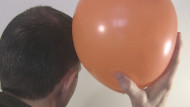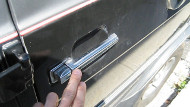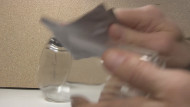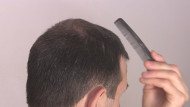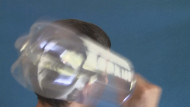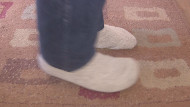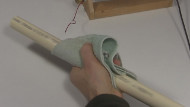| |
|
The triboelectric effect is what causes a balloon to become electrically charged when you rub it against your hair, or a car to become charged from its tires rolling on the road resulting in a shock when you touch the door handle.
Basically it's an effect that causes charging of two objects by making contact and then breaking contact. One becomes positively charged by giving up some of its electrons and the other becomes negatively charged by taking those electrons and keeping them after contact is broken. The more you make and break contact, the bigger the charge will be. For example, the more you rub a balloon against you hair, the more charged the balloon and you hair will become.
Which materials become charged in what way is listed in an an order called the triboelectric series (see the triboelectric series table below.) The triboelectric series has a positive end and a negative end. The farther apart any two materials are in the series, the more charged they will become. The material that's toward the positive end will become positively charged and the material that's toward the negative end will become negatively charged.
Video - Triboelectric effect/series or triboelectricity
The following video explains how the triboelectric effect works and gives several demonstratons.
References
1. The table on this page is from wikipedia.org with the metals removed as experimentally there is very little charge affinity, possibly because the rapid motion of conduction electrons cancels the effect.

